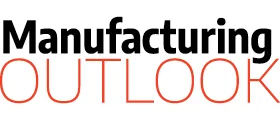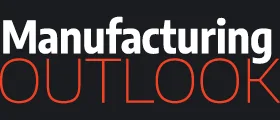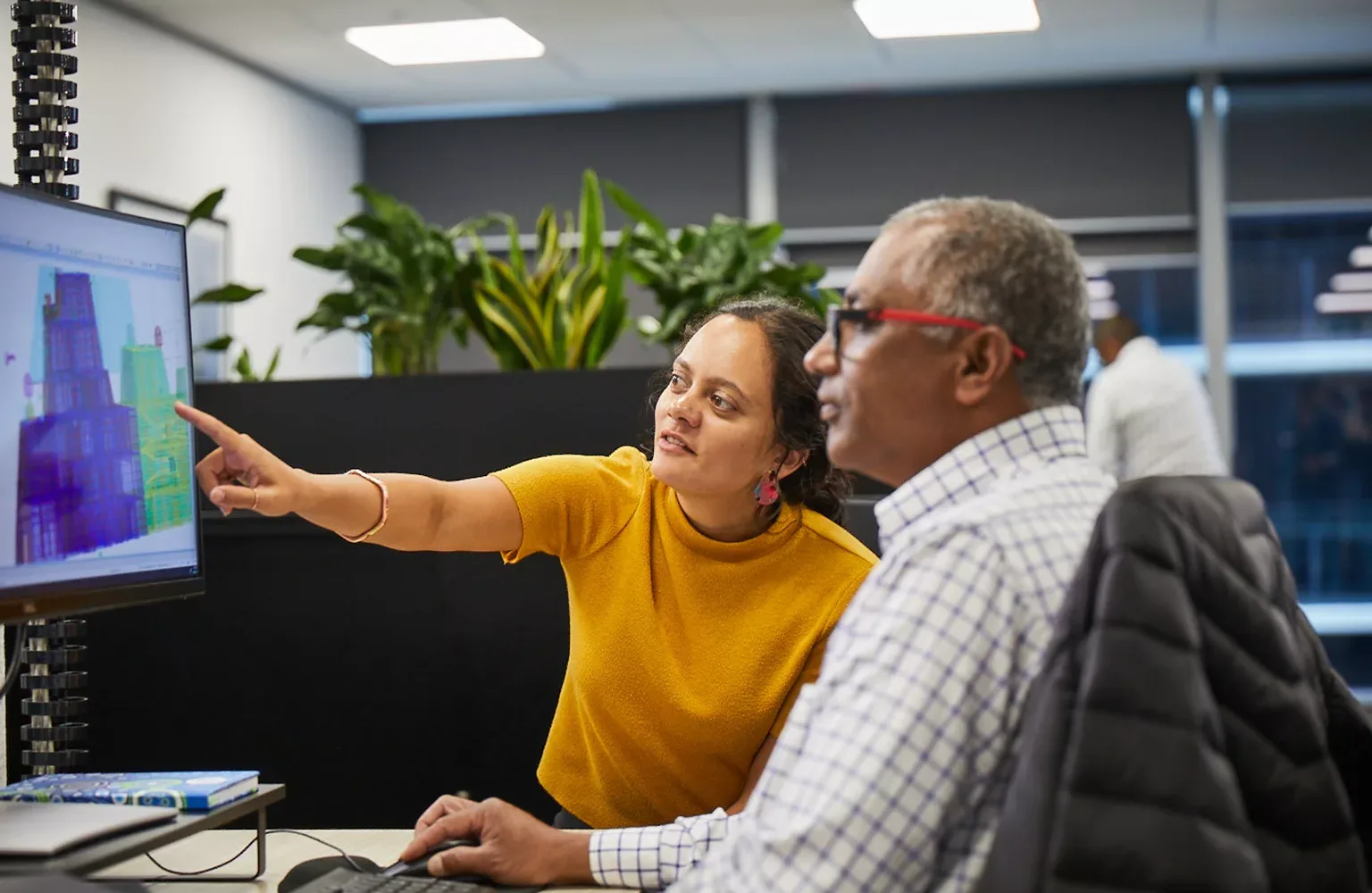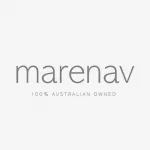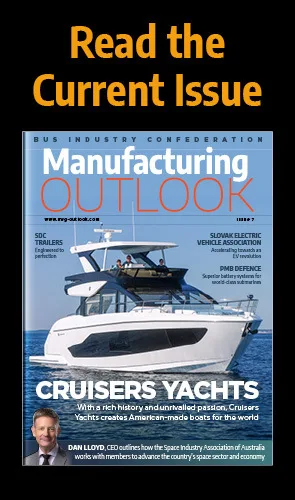A Design Authority dedicated to delivering world-class engineering and design services to the Royal Australian Navy, Israel Lozano, Executive Managing Director, outlines Navantia Australia’s commitment to excellence and journey to deliver a sovereign design capability for Australia.
INNOVATION WHERE IT MATTERS
The Australian defence industry is an exciting space to be involved in.”
As someone with considerable exposure to global defence markets, Israel Lozano, Executive Managing Director of Navantia Australia, can say this with some authority.
“The industry can present some challenges, but these are part of life and should be embraced. Challenges are what encourage people and businesses to continue to evolve and innovate,” he adds.
As an industry that offers long-term career opportunities as well as avenues for highly skilled professions, defence is also a sector that promotes innovation and leading-edge technologies. With many defence projects being long-term, this provides assurances for the industry to invest in developing its people and capabilities.
Navantia Australia is an Australian-led and operated company that delivers world-class engineering and design services to the Royal Australian Navy (RAN).
Established in 2012, the company’s team of 300 local experts based in Sydney, Melbourne, Canberra, and Perth is dedicated to ensuring the technical integrity of RAN’s surface fleet.
“We are responsible for over 60 percent of RAN’s surface fleet. Our parent company, Navantia, has transferred the Design Authority delegations for all four classes of vessels delivered to RAN to us,” Lozano informs.
Today, Navantia Australia ensures the design integrity of each of these naval ships throughout their life, guaranteeing safety and performance during operation and sustainment.
The company’s Australian workforce is responsible for all engineering and platform design changes, whilst its engineers are supported by equally committed and hardworking corporate teams.
In November 2023, Navantia Australia launched its Technical Partner Network (TPN) to provide RAN with the engineering services capabilities and capacity that it requires now and in the future.
“TPN began with a cohort of 14 companies, which has now expanded to 24 Australian businesses. Together, we have 800 engineers at our disposal to support naval ships,” he outlines.
While the company continues to grow in the field of engineering for the support of RAN ships designed by Navantia, it has begun to develop ships of its own for the Australian Defence Force (ADF) and expanded its portfolio of digital services.
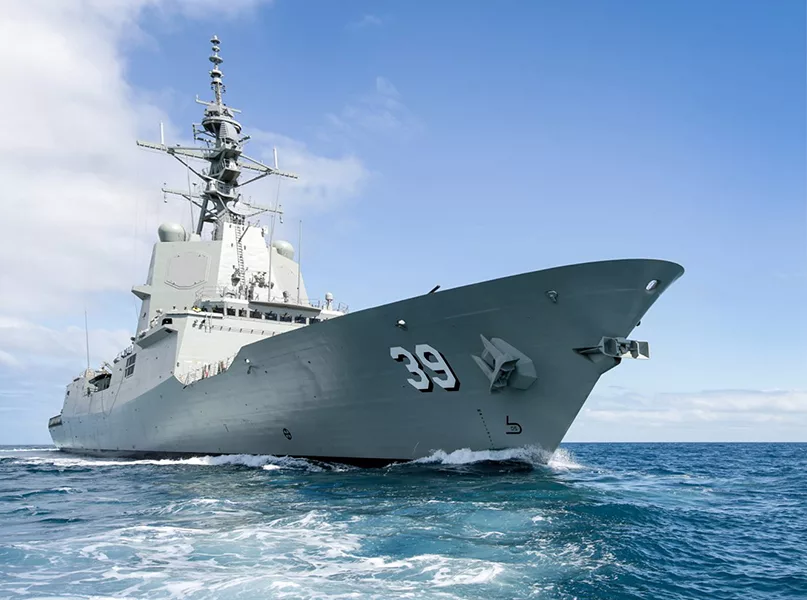
UNPARALLELED INDUSTRY KNOW-HOW
With the different types of naval ships currently in service with RAN totalling 110,000 tonnes, having the know-how on such a large capability differentiates Navantia Australia.
Possessing this expertise is a discriminator, not only for providing design support services, but for designing new ships best suited for Australian operations.
“As the Design Authority performing the work locally, we understand the design basis of all these platforms; our work evolves from that understanding,” Lozano reflects.
Understanding its products to such an extent also allows Navantia Australia to contribute to other activities in the value chain, such as new ship designs and the supply chain.
Navantia Australia also provides RAN the opportunity to evolve ship design, in-country using the design baseline in direct collaboration with the designer, which is a first for the industry in Australia.
“Since our establishment in 2012, we have grown and matured to become a strategic defence company and Design Authority for Australia in our own right,” he asserts.
This status was acknowledged in 2020, when the Australian Department of Defence signed a Strategic Agreement recognising Navantia Australia as a Design Authority for RAN, and now with the Designer Support Contractor contract, it plays a critical role under Plan Galileo, an Australian government-run naval shipbuilding programme that prioritises consideration of a vessel’s sustainment needs at the design stage.
“We are agile and have proven our ability to engage with defence, with industry, with academia, and with large and small organisations.
“I sincerely believe that Navantia Australia is a perfect example of how industry contributes to Australia’s goal of building a sovereign naval shipbuilding capability,” Lozano prides.

“I sincerely believe that Navantia Australia is a perfect example of how industry contributes to Australia’s goal of building a sovereign naval shipbuilding capability”
Israel Lozano, Executive Managing Director, Navantia Australia
AN INCLUSIVE EMPLOYER
Like the Australian population, which contains more than 300 different ancestries, Navantia Australia’s workforce also demonstrates a rich cultural diversity. Together with Aboriginal and Torres Strait Islander peoples, its local employees represent 40 different ethnicities.
“We have grown organically by over 30 percent year on year since 2019. The average age of our workforce, 39 years, is reflective of our efforts in growing our capability through investment in graduates and early career workers,” Lozano highlights.
The company has strong relationships with Australian universities such as the Australian Maritime College, the Royal Melbourne Institute of Technology (RMIT), the University of New South Wales (UNSW), and the University of Technology Sydney (UTS).
It also offers internships and graduate positions, primarily in engineering disciplines. Indeed, since 2019, Navantia Australia has employed 58 graduates and 33 interns.
Graduates are given ownership of end-to-end project work with Navantia Australia as part of a structured, supervised process which delivers on-the-job training until they are sufficiently experienced to deliver inputs on their own.
The company also offers employees the option to participate in formal mentoring programmes, run both internally and externally, to assist graduates in acquiring the requisite skills to succeed in their careers.
Attracting more women to the Australian defence industry is also something Navantia Australia is deeply passionate about.
“We have a strong belief that there is a large percentage of talent not currently working in defence, and that will enhance our industry,” Lozano comments.
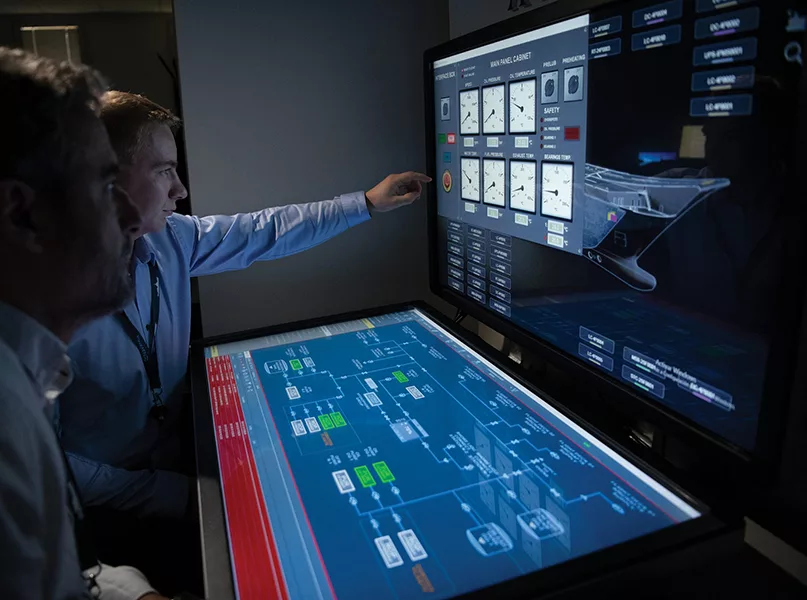
Since 2023, Navantia Australia has been an active supporter of the Sir Lawrence Wackett Defence and Aerospace Centre: Young Women in Defence STEM programme.
Run in conjunction with RMIT, the 2024 programme will see 50 female students at secondary schools across Victoria introduced to career opportunities within defence, aerospace, and industry.
“We have also introduced For the WIN (Women in Navantia), an internal, female-led networking community which aims to provide a supportive environment that enhances the role and contributions of women within the business,” he outlines.
In addition, Navantia Australia is committed to supporting veterans and their families through employment opportunities and supports veteran-focused charities and programmes.
“We are a recognised ‘Veteran Employer of Choice’ by the Australian Department of Veteran Affairs’ Veteran Employment Programme. We offer veterans tailored onboarding processes, mentoring, and have a specific veterans’ employee policy and strategy,” Lozano confirms.
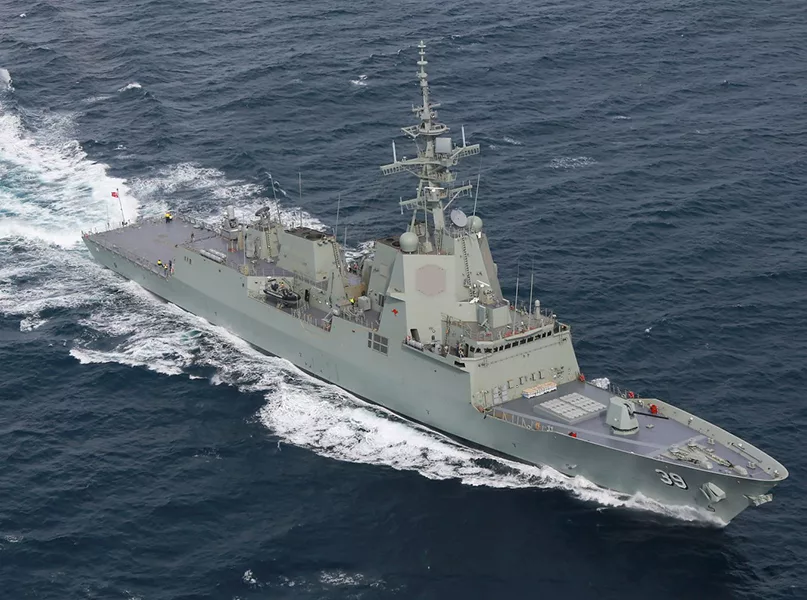
LEADING INNOVATION
Navantia Australia is currently investing in R&D projects to advance smarter solutions for ship sustainment and design.
“We are walking the path to progressively incorporate the digital tide in our processes and innovative solutions,” Lozano enthuses.
This will allow the company to deliver various services to avoid time and cost-consuming transactions and mistakes in the design or service delivery processes.
The same applies when it comes to the development of digital services. The company’s know-how, together with data gathered from the Integrated Platform Management System, provides the basis for developing innovative digital technologies.
With the support of academia and a focus on technology-led outcomes, Navantia Australia is establishing a project pipeline that will deliver advancements in operational, sustainment, and workforce development activities.
Navantia Australia’s growing digital capabilities blend its design and engineering know-how to enhance the services the company provides to its customers.
“Because of our unique position of being both the designer, OEM, and digital developer, we know what we are talking about – our technology is supported by deep knowledge,” he expresses.
In 2022, Navantia Australia announced the establishment of the Maritime Institute of Technologies (Marintec™), formed with UTS.
Through Marintec™, the company has been funding several areas of collaborative R&D, focusing on advanced software engineering, user experience (UX) digital expertise, game design, and artificial intelligence (AI).
With its sights set on becoming Australia’s centre of excellence for maritime digital technology solutions, Marintec™ is charting a course for a brighter, more innovative future.
However, Marintec™ is not just about technology – it’s also committed to developing the workforce of the future. With PhD programmes, internships, and employment opportunities for graduates, the partnership is cultivating a skilled future workforce while addressing the Australian maritime skills gap shortage.
“In November 2023, we entered additional partnerships with Australian universities including RMIT and the Australian Maritime College – University of Tasmania (AMC-UTAS),” Lozano informs.
RMIT, AMC-UTAS, and Navantia Australia were together successful in securing federal funding through the Next Generation Graduates Programme (NGGP), offered by the Commonwealth Scientific and Industrial Research Organisation’s (CSIRO) Data61 initiative, to support PhD projects that explore hydrodynamic effects for uncrewed surface vessels (USVs) and the optimisation of hydrogen power plants for USVs.
In addition to the NGGP, Navantia Australia is working with the universities on other independent projects. The company also recently renewed a strategic partnership agreement with the Defence Science Technology Group.
“We are walking the path to progressively incorporate the digital tide in our processes and innovative solutions”
Israel Lozano, Executive Managing Director, Navantia Australia
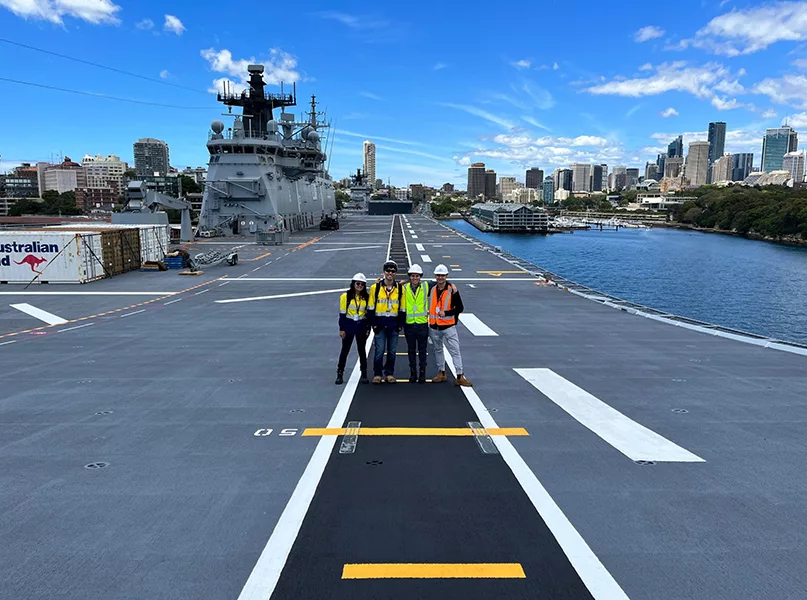
A VAST RANGE OF PROJECTS
The implementation of the Commonwealth’s Plan Galileo Maritime Sustainment Model, which highlights sustainment as a key enabling sovereign capability in naval shipbuilding, heralds an exciting new era for Navantia Australia.
“We are excited about this new model. The Design Support Contract (DSC) is vital to the success of the new model, as our deep product knowledge and baseline management will facilitate design integrity throughout sustainment and continuous improvement activities,” Lozano shares.
This, combined with the company’s capability to collaborate and effectively communicate within the enterprise environment, will contribute to the assurance of RAN’s fleet, the availability of its ships, and reduced costs throughout the life of the vessels.
The long-term DSC enables Navantia Australia to continue to invest in enabling and developing sovereign naval design and engineering capabilities. A critical element in achieving this is through local partnerships.
“These partnerships include collaboration with other Australian companies to expand, which is why we established our TPN,” he details.
“The DSC is not only an opportunity for Navantia Australia, but for the TPN to also benefit from the certainty of workflow, enabling members to invest in capability development,” outlines Lozano.
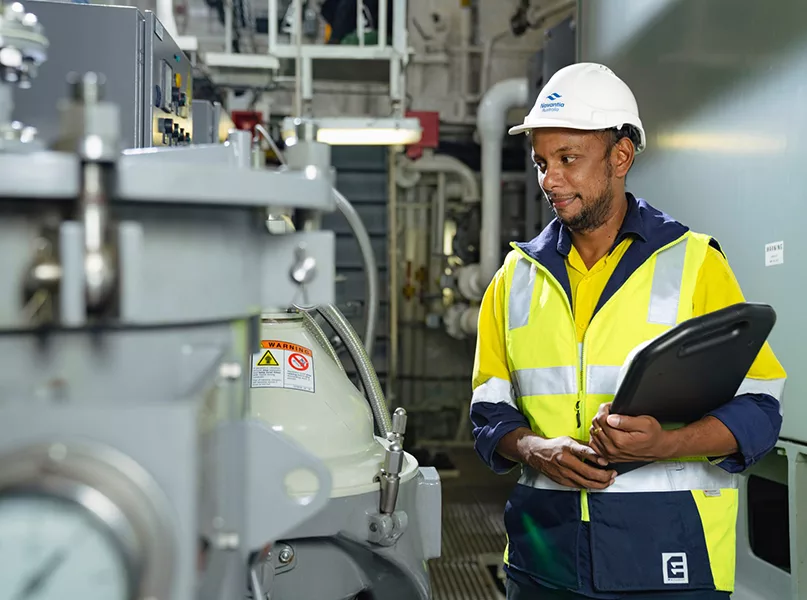
The maturing of the company’s local end-to-end design capability is another important area of growth; in addition to the engineers who are working on sustainment programmes, Navantia Australia is investing in developing new ship designs.
The company’s first complete design is a medium landing craft that is optimised for riverine and littoral operations. This design, the Kodal LMV-M, was originated and developed by its Naval Design and Engineering Centre in Melbourne.
“We are receiving a high degree of interest in the platform, and it has been accepted into Navantia’s global portfolio, which is a major achievement,” Lozano prides.
Another significant project underway presently is the capability upgrades to RAN’s Hobart Class Guided Missile Destroyers.
“Supporting these upgrades has created 60 full-time design and engineering jobs with Navantia Australia in the fields of combat systems interface into the platform, naval architecture, outfitting, electrical, mechanical, structural, design drafting, and systems engineering,” he shares.
Going forward, Navantia Australia hopes to continue to deliver what RAN needs now and in the future.
The company aims to keep growing its Australian capabilities in support of the government’s objectives for achieving a sovereign continuous naval shipbuilding and sustainment industry, whilst ensuring that delivery is done in accordance with its strong corporate values and ethical behaviours.
“We are continuing our journey to deliver design sovereignty to Australia to enable the design of future complex warships to be developed locally. It’s a path we must walk together with RAN and defence,” Lozano concludes.
NAVANTIA AUSTRALIA PARTNER

